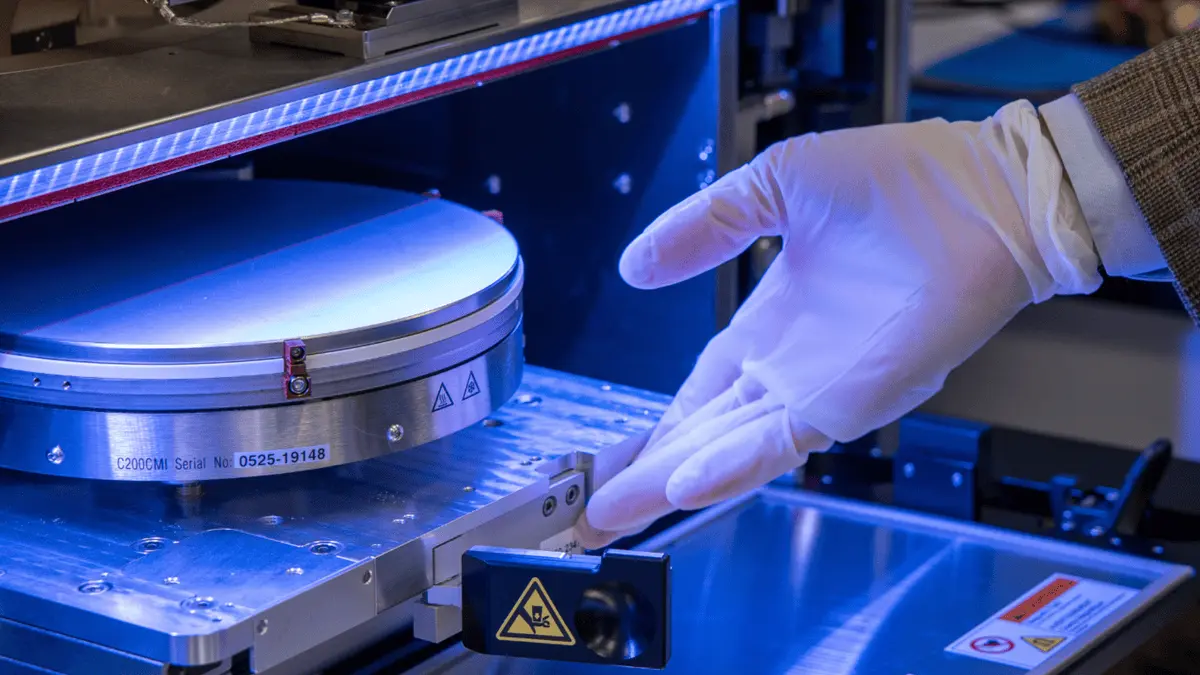Nvidia Unveils Isaac GR00T Blueprint: A Leap Forward in Humanoid Robotics Development
3 Sources
3 Sources
[1]
Nvidia unveils Isaac GR00T blueprint to accelerate humanoid robotics
At the CES 2025 keynote of Nvidia CEO Jensen Huang, Nvidia said that Isaac GR00T workflows for synthetic data and Nvidia Cosmos world foundation models will supercharge development of general humanoid robots. Over the next two decades, the market for humanoid robots is expected to reach $38 billion. To address this significant demand, particularly in industrial and manufacturing sectors, Nvidia is releasing a collection of robot foundation models, data pipelines and simulation frameworks to accelerate next-generation humanoid robot development efforts. The Nvidia Isaac GR00T Blueprint for synthetic motion generation helps developers generate exponentially large synthetic motion data to train their humanoids using imitation learning. Imitation learning -- a subset of robot learning -- enables humanoids to acquire new skills by observing and mimicking expert human demonstrations. Collecting these extensive, high-quality datasets in the real world is tedious, time-consuming and often prohibitively expensive. Implementing the Isaac GR00T blueprint for synthetic motion generation allows developers to easily generate exponentially large synthetic datasets from just a small number of human demonstrations. Starting with the GR00T-Teleop workflow, users can tap into the Apple Vision Pro to capture human actions in a digital twin. These human actions are mimicked by a robot in simulation and recorded for use as ground truth. The GR00T-Mimic workflow then multiplies the captured human demonstration into a larger synthetic motion dataset. Finally, the GR00T-Gen workflow, built on the Nvidia Omniverse and Nvidia Cosmos platforms, exponentially expands this dataset through domain randomization and 3D upscaling. The dataset can then be used as an input to the robot policy, which teaches robots how to move and interact with their environment effectively and safely in NVIDIA Isaac Lab, an open-source and modular framework for robot learning. World Foundation Models Narrow the Sim-to-Real Gap Nvidia also announced Cosmos at CES, a platform featuring a family of open, pretrained world foundation models purpose-built for generating physics-aware videos and world states for physical AI development. It includes autoregressive and diffusion models in a variety of sizes and input data formats. The models were trained on 18 quadrillion tokens, including 2 million hours of autonomous driving, robotics, drone footage and synthetic data. In addition to helping generate large datasets, Cosmos can reduce the simulation-to-real gap by upscaling images from 3D to real. Combining Omniverse -- a developer platform of application programming interfaces and microservices for building 3D applications and services -- with Cosmos is critical, because it helps minimize potential hallucinations commonly associated with world models by providing crucial safeguards through its highly controllable, physically accurate simulations. An Expanding Ecosystem Collectively, Nvidia Isaac GR00T, Omniverse and Cosmos are helping physical AI and humanoid innovation take a giant leap forward. Major robotics companies have started adopting and demonstrated results with Isaac GR00T, including Boston Dynamics and Figure. Humanoid software, hardware and robot manufacturers can apply for early access to Nvidia's humanoid robot developer program.
[2]
NVIDIA Announces Isaac GR00T Blueprint to Accelerate Humanoid Robotics Development
Isaac GR00T workflows for synthetic data and NVIDIA Cosmos world foundation models supercharge development of general humanoid robots. Over the next two decades, the market for humanoid robots is expected to reach $38 billion. To address this significant demand, particularly in industrial and manufacturing sectors, NVIDIA is releasing a collection of robot foundation models, data pipelines and simulation frameworks to accelerate next-generation humanoid robot development efforts. Announced by NVIDIA founder and CEO Jensen Huang today at the CES trade show, the NVIDIA Isaac GR00T Blueprint for synthetic motion generation helps developers generate exponentially large synthetic motion data to train their humanoids using imitation learning. Imitation learning -- a subset of robot learning -- enables humanoids to acquire new skills by observing and mimicking expert human demonstrations. Collecting these extensive, high-quality datasets in the real world is tedious, time-consuming and often prohibitively expensive. Implementing the Isaac GR00T blueprint for synthetic motion generation allows developers to easily generate exponentially large synthetic datasets from just a small number of human demonstrations. Starting with the GR00T-Teleop workflow, users can tap into the Apple Vision Pro to capture human actions in a digital twin. These human actions are mimicked by a robot in simulation and recorded for use as ground truth. The GR00T-Mimic workflow then multiplies the captured human demonstration into a larger synthetic motion dataset. Finally, the GR00T-Gen workflow, built on the NVIDIA Omniverse and NVIDIA Cosmos platforms, exponentially expands this dataset through domain randomization and 3D upscaling. The dataset can then be used as an input to the robot policy, which teaches robots how to move and interact with their environment effectively and safely in NVIDIA Isaac Lab, an open-source and modular framework for robot learning. World Foundation Models Narrow the Sim-to-Real Gap NVIDIA also announced Cosmos at CES, a platform featuring a family of open, pretrained world foundation models purpose-built for generating physics-aware videos and world states for physical AI development. It includes autoregressive and diffusion models in a variety of sizes and input data formats. The models were trained on 18 quadrillion tokens, including 2 million hours of autonomous driving, robotics, drone footage and synthetic data. In addition to helping generate large datasets, Cosmos can reduce the simulation-to-real gap by upscaling images from 3D to real. Combining Omniverse -- a developer platform of application programming interfaces and microservices for building 3D applications and services -- with Cosmos is critical, because it helps minimize potential hallucinations commonly associated with world models by providing crucial safeguards through its highly controllable, physically accurate simulations. An Expanding Ecosystem Collectively, NVIDIA Isaac GR00T, Omniverse and Cosmos are helping physical AI and humanoid innovation take a giant leap forward. Major robotics companies have started adopting and demonstrated results with Isaac GR00T, including Boston Dynamics and Figure. Humanoid software, hardware and robot manufacturers can apply for early access to NVIDIA's humanoid robot developer program.
[3]
Nvidia is helping humanoid robots learn through Apple Vision Pro instruction | TechCrunch
Robotics have been a foundational element of Nvidia's stratospheric growth in recent years. When the chip maker announced GR00T in March of last year, it was heralded as a watershed moment from humanoid robotics. Most of the category's biggest names were available from launch, including, 1X Technologies, Agility Robotics, Apptronik, Boston Dynamics, Figure AI, Fourier Intelligence, Sanctuary AI, and Unitree Robotics. At CES on Monday, CEO Jensen Huang unveiled another essential aspect of GR00T: Blueprint. The new modality is based around imitation learning, a fundamental aspect of teaching robots a new skill. It's doubly important in the world of humanoids, whose designs are based on the one doing the teaching. Imitation learning is what it sounds like. A person performs an action and the robot follows suit. It's an effective method of educating systems that are designed to automate existing tasks, like those in factories and warehouse, where the first several rounds of humanoids are being deployed. Teleoperation has a fundamental role to play in all of this. It can be used to teach robots remotely, instantly digitizing one's actions through an approximation of a real-life environment. With GR00T Blueprint, users can create these actions by using Apple's Vision Pro. The process is captured as a digital twin, which the robot can then repeatedly execute in simulation.
Share
Share
Copy Link
Nvidia introduces Isaac GR00T Blueprint at CES 2025, revolutionizing humanoid robotics development through synthetic data generation and imitation learning, leveraging Apple Vision Pro for motion capture.

Nvidia Unveils Isaac GR00T Blueprint at CES 2025
At the CES 2025 keynote, Nvidia CEO Jensen Huang announced the release of Isaac GR00T Blueprint, a groundbreaking initiative set to accelerate the development of humanoid robotics. This new technology aims to address the growing demand in the humanoid robot market, which is expected to reach $38 billion over the next two decades
1
2
.Revolutionizing Humanoid Robot Development
The Isaac GR00T Blueprint introduces a novel approach to synthetic motion generation, enabling developers to create vast amounts of synthetic motion data for training humanoid robots using imitation learning. This method allows robots to acquire new skills by observing and mimicking expert human demonstrations
1
2
.Innovative Workflows for Synthetic Data Generation
The GR00T Blueprint comprises three key workflows:
- GR00T-Teleop: Utilizes Apple Vision Pro to capture human actions in a digital twin environment.
- GR00T-Mimic: Multiplies the captured human demonstrations into larger synthetic motion datasets.
- GR00T-Gen: Exponentially expands the dataset through domain randomization and 3D upscaling, leveraging Nvidia Omniverse and Cosmos platforms
1
2
.
These workflows collectively address the challenges of collecting extensive, high-quality datasets in the real world, which can be tedious, time-consuming, and expensive
1
2
.Nvidia Cosmos: Bridging the Sim-to-Real Gap
Alongside Isaac GR00T, Nvidia introduced Cosmos, a platform featuring pretrained world foundation models for generating physics-aware videos and world states. Trained on 18 quadrillion tokens, including 2 million hours of various footage, Cosmos aims to reduce the simulation-to-real gap by upscaling images from 3D to real
1
2
.Expanding Ecosystem and Industry Adoption
Major robotics companies, including Boston Dynamics and Figure, have already begun adopting and demonstrating results with Isaac GR00T. Nvidia is offering early access to its humanoid robot developer program for software, hardware, and robot manufacturers
1
2
3
.Related Stories
Imitation Learning and Teleoperation
The GR00T Blueprint emphasizes imitation learning as a crucial aspect of teaching robots new skills. This approach is particularly important for humanoid robots designed to automate existing tasks in industrial and manufacturing sectors
3
.Teleoperation plays a fundamental role in this process, allowing users to teach robots remotely by creating actions using Apple's Vision Pro. These actions are captured as digital twins, which robots can then execute repeatedly in simulation
3
.Impact on the Robotics Industry
The combination of Nvidia Isaac GR00T, Omniverse, and Cosmos represents a significant leap forward in physical AI and humanoid innovation. By providing powerful tools for synthetic data generation, simulation, and learning, Nvidia is positioning itself at the forefront of the rapidly growing humanoid robotics market
1
2
3
.References
Summarized by
Navi
Related Stories
Nvidia Unveils Groot N1: A Groundbreaking Foundation Model for Humanoid Robotics
19 Mar 2025•Technology

NVIDIA Unveils Advanced AI Tools for Humanoid Robotics Development
19 May 2025•Technology

NVIDIA Unveils Advanced AI and Simulation Tools to Accelerate Robot Learning and Humanoid Development
07 Nov 2024•Technology

Recent Highlights
1
OpenAI releases GPT-5.2 AI model after code red memo targets Google's Gemini 3 threat
Technology

2
Disney invests $1 billion in OpenAI, licenses 200+ characters for Sora AI video generator
Technology

3
OpenAI faces wrongful death lawsuit after ChatGPT allegedly fueled murder-suicide tragedy
Policy and Regulation





